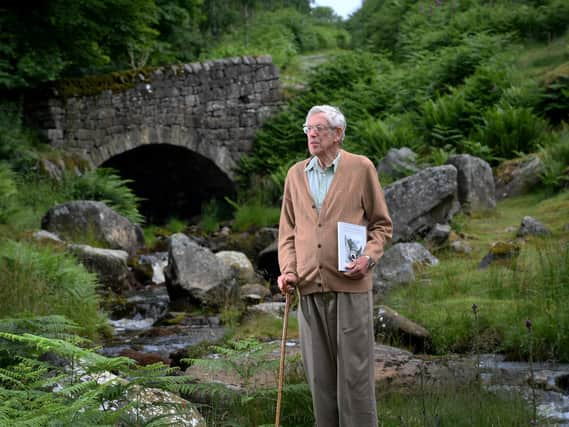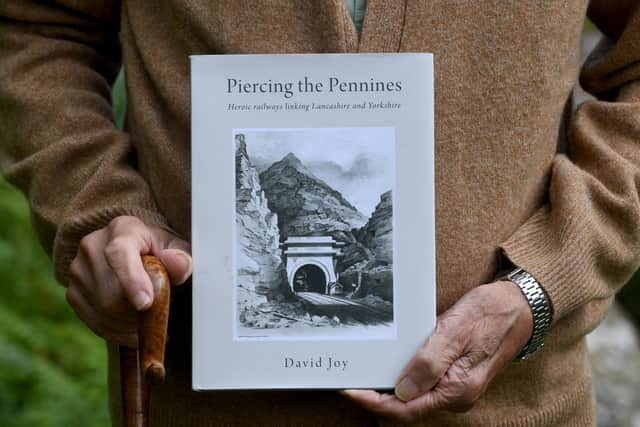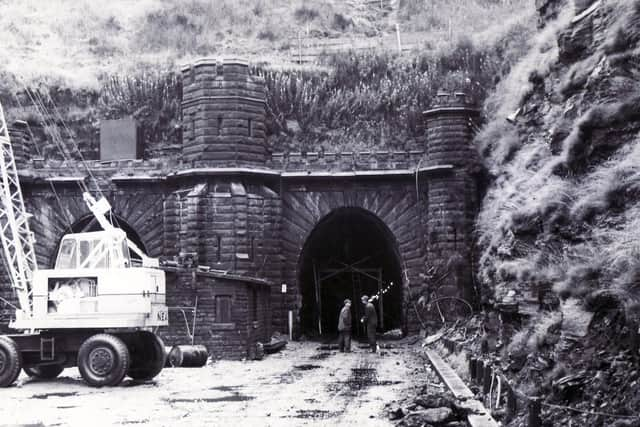Yorkshireman and ex-Dalesman editor David Joy's book tells story of the epic trans-Pennine railway tunnels


David Joy’s new book begins with a confession.
“It might seem close to treachery for a dedicated Yorkshireman to write a book giving so much emphasis to Lancashire in general and Manchester in particular,” he writes. “It has to be confessed that the original intention was to celebrate how true Yorkshire grit created heroic railways tunnels linking God’s Own County with the other side of the Pennines. Truth to tell, it is the opposite way round. The kick-start and initial driving force came from Manchester.”
This must have come as a bruising discovery for Joy, whose family have farmed in the Dales since 1600, and who as a young man was a reporter for this newspaper, went on to become editor of The Dalesman magazine and still lives in Hebden, North Yorkshire


Advertisement
Hide AdAdvertisement
Hide Ad“I joke to people that I’m almost local, I’ve been here long enough,” he says.
His latest hardback, Piercing the Pennines: Heroic Railways Linking Lancashire and Yorkshire, charts the creation of lines between the rival regions following the canal age and what that meant for the industrial revolution – and what it means now.
He says: “I’ve written loads of books on the Settle-Carlisle railway, that was my baptism for writing books, and about men tunnelling against the odds through the Pennines. And I thought there was still a largely untold story in the great railway tunnels that connected Lancashire and Yorkshire – Summit, Woodhead, famous tunnels, particularly Woodhead and so on – and I would say it myself, wouldn’t I? It’s come together as a very satisfying book.”
But he had to get the matter of Lancashire’s initiative out the way.


Advertisement
Hide AdAdvertisement
Hide Ad“Yes, quite upset me,” he says. “I mean I am a diehard Yorkshire in many ways. I have written 50 books but this is the first one to give such emphasis to Lancashire and to be accurate which one tries to be, it had to do that because the driving force, the money, did come out of Manchester and Liverpool.”
The railway age finally brought the two regions together with a series of tunnels, three of which were successively the longest in the world when completed in the 1840s.
The book focuses on a number of main tunnels: Summit, the first railway between Manchester and Leeds in 1841, engineered by George Stephenson; Woodhead, built by a labour force of 1,000 men described as “depraved, degraded and reckless, living like savages in stone shelters”; Standedge, which formed a more direct link between Manchester and Leeds with a magnificent station at Huddersfield; Totley, which at more than three-and-a-half miles was the longest of all trans-Pennine tunnels when completed; and a later version of Woodhead, which opened at vast cost in 1954 as a new tunnel for electric trains and closed to passengers only 16 years later.
While Manchester brought in cotton (using the slave trade) via Liverpool, the city also wanted access to Europe through Hull, says Joy, which is why the initial trans-Pennine railways were so important to them.
Advertisement
Hide AdAdvertisement
Hide Ad“General passengers were initially totally scared of going through tunnels, but leaving that aside, they wanted to get from Manchester, particularly Manchester to Liverpool and Manchester to Yorkshire, and especially Leeds and Hull. They wanted a trans-Pennine, proper railway link, which we’re still talking about 150, nearly 200 years later, aren’t we? But that’s what they wanted, a good way of journeying through the Pennines, because it was a huge leap from the canal age, which had taken them days rather than hours (to travel). It really was a sudden transformation, was the railway age.”
The book shows the tunnels to be extraordinary achievements against huge odds, capturing their epic construction in the harshest of conditions, during which many lives were lost.
“We recognise the great men, the engineers – no knocking George Stephenson, who was a fabulously excellent engineer – but the men who built the railways, working in tunnels by having to rely on matches to light candles, fuses, gunpowder. Can you think of a more lethal combination? And no wonder the average death rate in most of the great tunnels was 40-plus, it really was horrendous.
“But in a way it was part of the conditions of the time because they were actually paid pretty highly compared with what they could earn as labourers in other parts of the country, so there were pluses and minuses.”
Advertisement
Hide AdAdvertisement
Hide AdThe living conditions for navvies were just as awful, with outbreaks of disease such as cholera occurring and truckle beds used to cram as many workers into wooden huts as possible – while children were “suspended from the roof in baskets”.
“The really notorious one was Woodhead because it was the highest of the great tunnels, the then longest of the great Pennine tunnels,” says Joy. “It was so bad it resulted in a Parliamentary inquiry, which as was so often the case had pages and pages and pages of evidence and then nothing ultimately happened, but that’s the way of world with such inquiries.”
Joy, who turns 80 next year, started his career as a reporter at The Yorkshire Post in the early 1960s after leaving school – his father, Richard, had been agriculture correspondent – but moved to The Dalesman, where he worked for 28 years from 1965 and eventually became editor.
“Britain’s best-selling regional magazine based in the small village of Clapham and had an editorial vacancy almost literally once every blue moon, certainly once every 10 years.
Advertisement
Hide AdAdvertisement
Hide Ad“The founder and first editor wanted to retire. I came along and ended up as only the third editor in about 40 years.”
After taking early retirement, Joy launched Great Northern Books, which is based in Bradford and is the publisher of Piercing the Pennines.
Rail construction continues to be a hot topic today, of course, as political wrangling over HS2 and Northern Powerhouse Rail continues.
Speaking about HS2, part of which may eventually be built in Yorkshire, Joy says: “I am not happy about it...I’m not certain it will ever get very far north of Birmingham and I think for the damage that is being done just to transport an elite number of passengers between London and Birmingham 20 minutes faster and destroy a lot of trees and woodland and countryside in its wake, I just do not think it is worth it. The answer would have been better existing railway and better rolling stock, and that would have cost a fraction.”
Advertisement
Hide AdAdvertisement
Hide AdHe adds: “I always come back to the now largely forgotten modern tunnel built between Sheffield and Manchester in the 1950s (Woodhead), shut down after a life of only 16 years and still there underneath the Pennines waiting for something to happen to it, and that’s very, very sad.”
Piercing the Pennines is out now and can be ordered from Great Northern Books on 01274 735056 or its website.
Profile
David Joy is a founder member of what is now the Friends of the Dales, he later became a founder trustee of the Yorkshire Dales Millennium Trust.
For almost 40 years he was local secretary of CPRE (Campaign for the Protection of Rural England) and strove to safeguard the area’s finest features, and in 2006 he was awarded the MBE for services to the environment.
Advertisement
Hide AdAdvertisement
Hide AdJoy’s previous book, A Passion for the Dales, reflects his conviction that conservationists and farmers need to be on the same side.
Otherwise, a way of life that has endured in the Dales for more than a thousand years “will be lost and the area will become a combination of theme park and wilderness”.